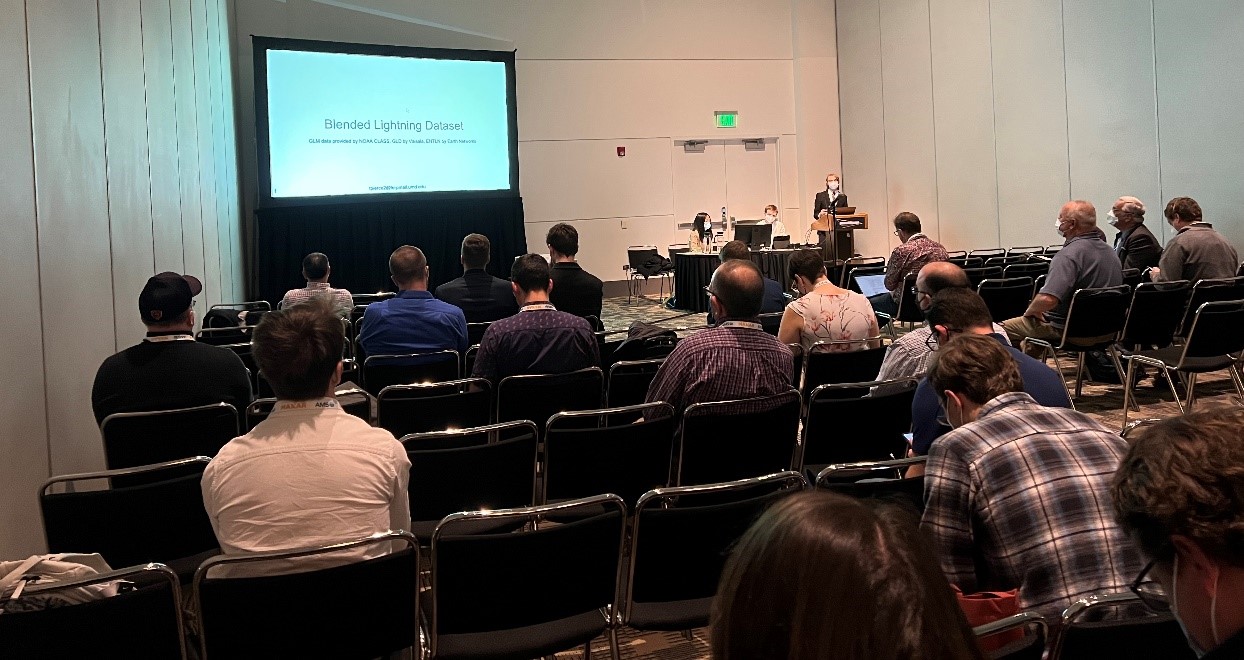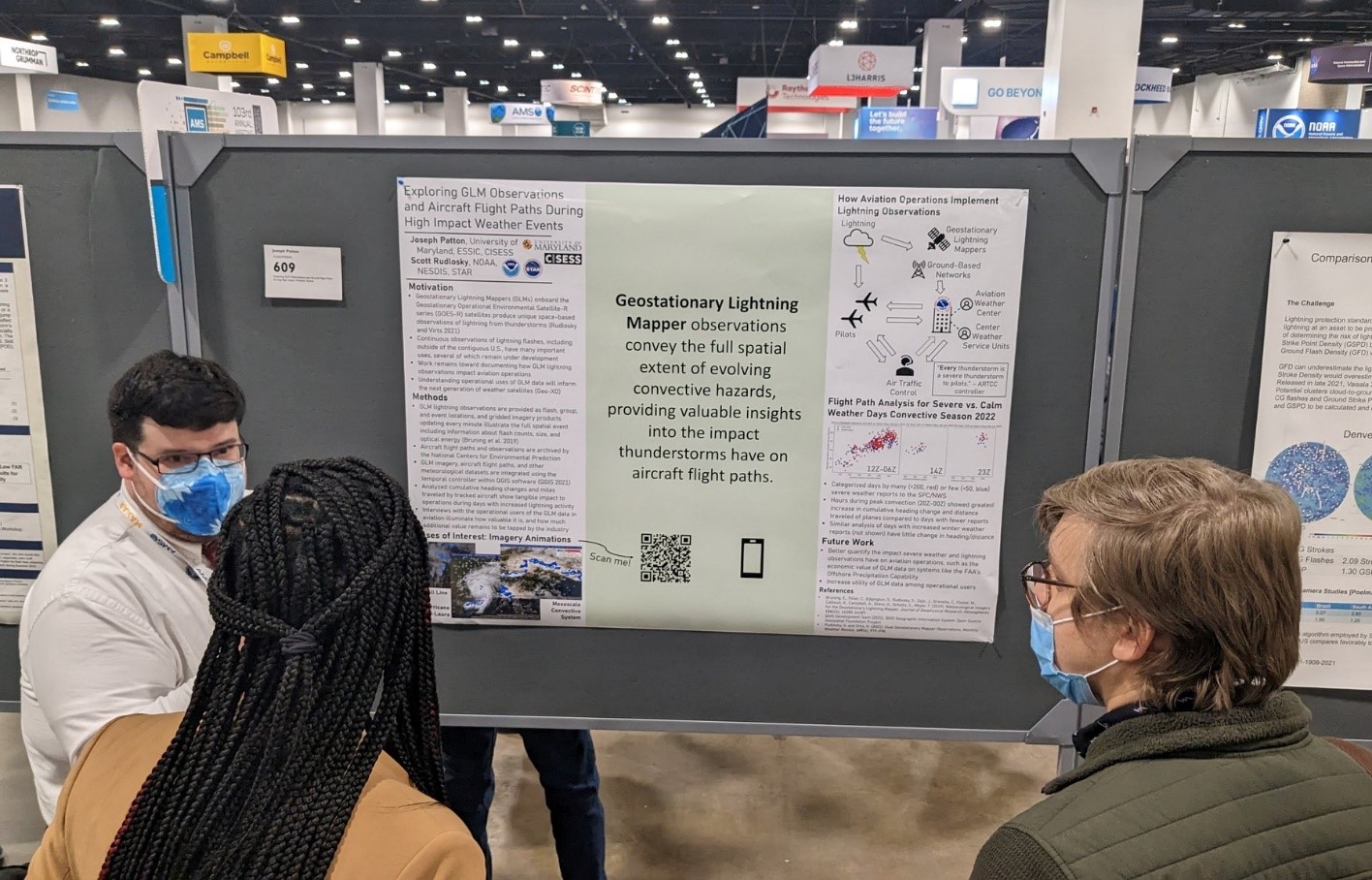The ESSIC/CISESS Lightning Group presented five oral talks and four posters (two at the Student Conference) at the 2023 AMS Annual Meeting in Denver, CO. The presenters and titles are listed below:
- Scott D. Rudlosky: Characterizing the Relation between Lightning and Wildfires in the Western United States;
- Jonathan W. Smith: Geostationary Satellite and Climate Model Flash Frequency Comparisons
- Downscaling Geostationary Lightning Mapper Observations with Python; and
- Terrence Pierce: Developing a Blended Lightning Dataset and its Applications .

Posters:
- Joseph Patton: Exploring GLM Observations and Aircraft Flight Paths During High Impact Weather Events;
- Daile Zhang: Studying GLM Location Errors and Detection Using ISS LIS;
- Alexander Friedman: Developing a Raspberry Pi Camera Network in the Greater D.C. Area and Beyond (Student Conference);
- Domenic C Brooks: A Study of Lightning Climatology of the Greater Washington DC Area and the July 12, 2022 Severe Thunderstorm Event (Student Conference).
Zhang’s poster examined the overlapping observations with the GOES Geostationary Lightning Mappers (GLMs), and the Lightning Imaging Sensor (LIS) on the International Space Station (ISS), to better characterize the cloud-top optical signals. Location offset vector maps for the GLM parallax corrections based on the coincidence ISS LIS group observations were also created.

In addition, Patton and Zhang chaired sessions GOES Satellite Geostationary Lightning Mapper (GLM) Sensor Performance, Data Products and User Applications, and Lightning Detection Technology, Sensor Inter-Comparisons, and Applications, respectively.






